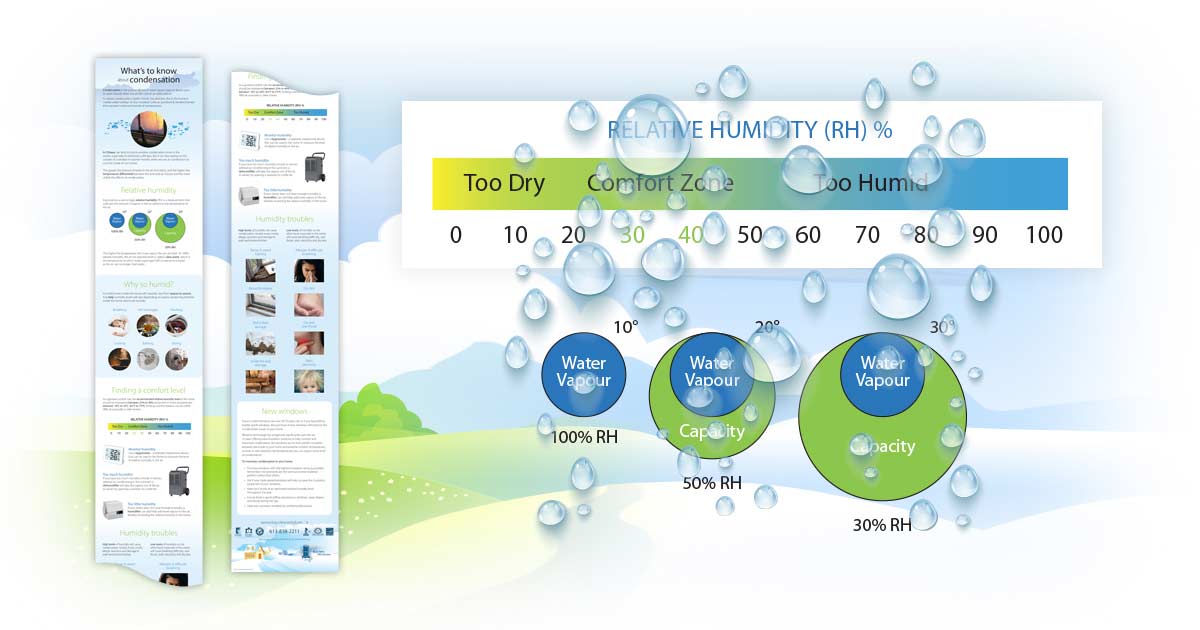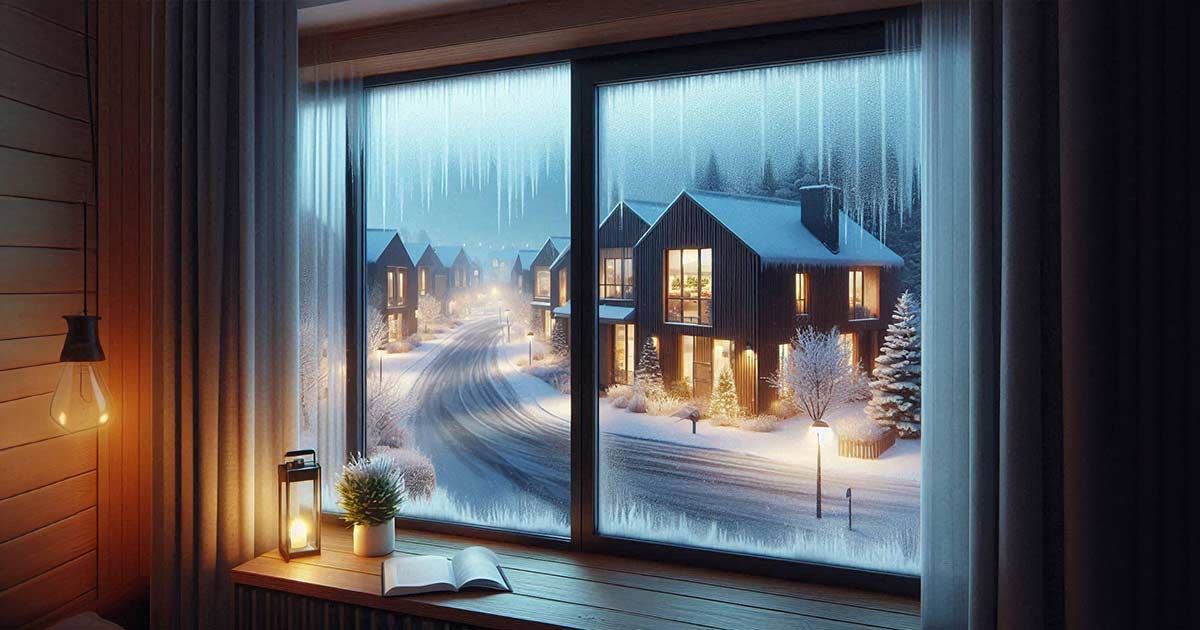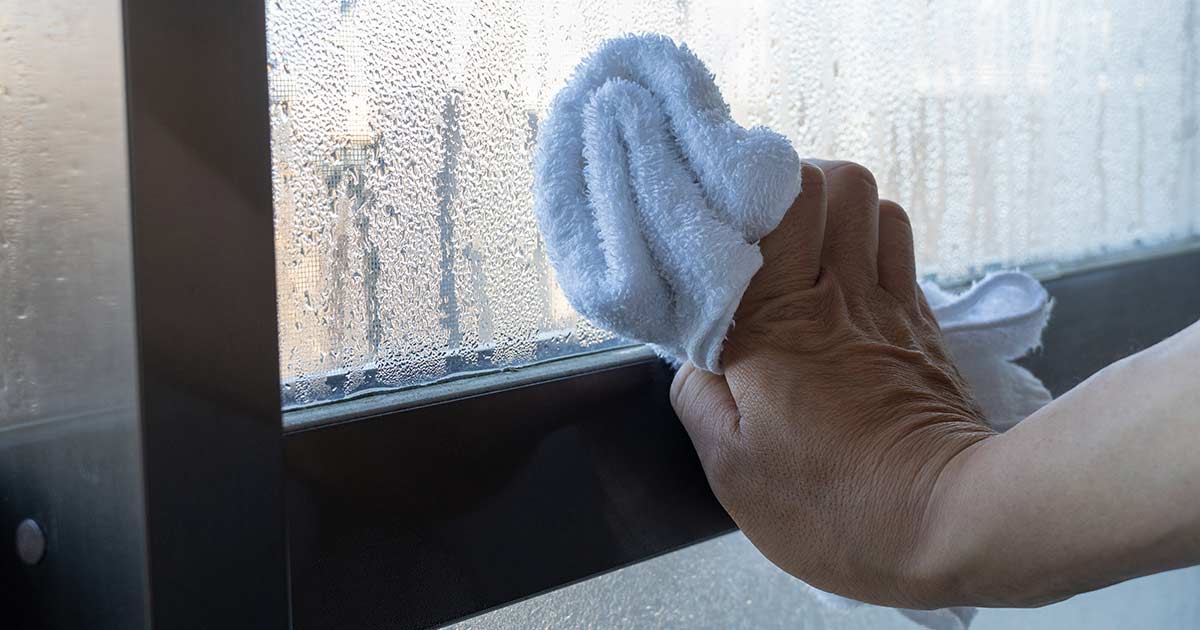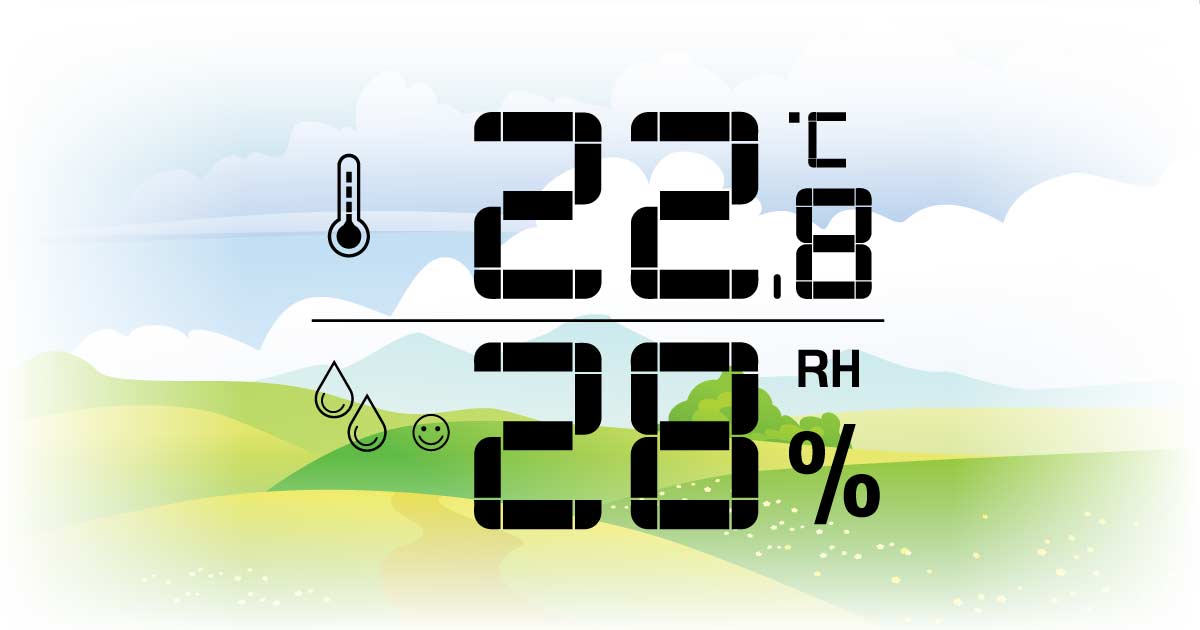Insights > Article > Posted: 2025-Mar-20, Updated: 2025-Mar-31
Condensation
Year-round Semblance
Many believe that investing in energy-efficient windows is the ultimate solution to bid farewell to condensation. However, even the most cutting-edge windows on the market fall short of creating a flawless insulating barrier between the inside and outside of your home. Windows, with their (R4) efficiency rating, still trail far behind walls, boasting an (R13) efficiency rating.
The truth is, that window panes are the coldest or warmest surfaces in your home, dictated by the season. Their direct exposure to outdoor air renders them prone to condensation, particularly when confronted with substantial temperature variations between the inside and outside.
Read on to grasp why this recurring phenomenon happens (with scenarios) and learn how temperature and environmental conditions together affect the comfort and energy efficiency of your home.
The basics of condensation variables
To understand exactly what’s going on, we need to comprehend the nature of a few important variables and how they are related:
Vapour (V)
- All air contains water vapour of varying quantities. The lower the air temperature, the smaller the maximum possible capacity for vapour.
- Humidity is water vapour or moisture in the air.
- Cold air does not retain moisture as much as hot air does.
Vapour Saturation (VS)
Vapour saturation is a state in which temperature can hold a maximum amount of water vapour (in a gaseous form). The higher the temperature, the more water it can hold. This state is commonly referred to as 100% relative humidity.
Absolute Humidity (AH)
Absolute humidity is the measure of water vapour (moisture) in the air, regardless of temperature. It is measured in grams of water per cubic meter of air (g/m³).
Relative Humidity (RH)
- Relative humidity is the measure of water vapour in the air, relative to the temperature of the air.
- As relative humidity increases, so does the dew point.
- Relative humidity decreases as temperature increases if the absolute humidity remains constant.
Dew Point (DP)
- The Dew Point is the temperature at which air has to be cooled to reach vapour saturation. The higher the Dew Point, the higher the water content in the air. The dew point is calculated using air temperature and relative humidity.
- When air is cooled, relative humidity increases until it reaches a dew point (air becomes saturated). Further cooling below the dew point will induce condensation.
- The temperature of the dew point will depend upon the absolute content of water vapour, that is the absolute humidity (AH), measured in g/m³.
- The dew point of humid air will be higher than the dew point of dry air.
Temperature (T)
- When temperatures are high (hot), the air in the atmosphere can handle more water vapour than when the temperature is low (cold).
- As the temperature increases, so does the dew point.
- When an object is cooler than the air around it, the water molecules in the air come together and stick to its surface, forming a thin layer of water droplets.
- Both air temperature and absolute humidity will determine what type of condensation will occur when the air is cooled.
Condensation (C)
- Condensation occurs when water vapour in the air is returned to its original liquid state.
- Condensation is not a matter of one particular temperature but of a difference between two.
- Condensation of water vapour occurs when the temperature of the air is lowered to its dew point.
- Condensed water is called dew when it forms on a solid surface, or frost if it freezes.
- Window condensation is a simple occurrence that takes place under the right conditions of temperature and humidity.
Differing environments
Another important factor when looking at window condensation is the difference in temperatures between the inside and outside of a home; there will always be a transference of hot or cold on the window glass. Insulation and ventilation play crucial roles in managing indoor humidity levels to prevent condensation. Window treatments, such as blinds or curtains, can also affect condensation formation.
Other considerations
Extreme hot and cold temperature changes in a short period of time inside or outside the home can result in condensation on the window glass.
Seasonal condensation scenarios
If you bring a very cold metal object from outside into a warm environment, the air close to the surface of that object is cooled below the inside environment's dew point causing the air around it to condense leaving water on and around it.
The differing temperatures between the outside and the inside, the window and the moisture in the air all have an effect on causing condensation any time of the year (see some examples below).
Spring Scenario
Fog on the exterior of the window
- The outside overnight temperature -10°C
- Inside temperature +20
- Inside relative humidity 40%
- Outside humidity 40%
Result
The quick cool overnight left lots of dew in the outside air, which was transferred to the exterior of the window. If the following day is sunny and warm, the exterior fogginess on the window will disappear quickly. Energy-efficient windows in this scenario may not make much of a difference, as condensation in the form of dew will be everywhere. Homeowners can manage indoor humidity levels during the transition from winter to spring to minimize condensation.
Summer Scenario
Fog on the exterior of the window
- The outside temperature is +30°C
- The inside temperature is +20°C
- Inside relative humidity 10%
Result
Typically, this will result in very mild fogging, if any, on the exterior of the window. Again, the more efficient the insulating properties of the window, the lesser the amount of fogging on the outside of the window. Air conditioning can help control indoor humidity during hot weather.
Fall Scenario
Fog on the exterior of the window
- Outside overnight temperature -10°C
- Inside temperature +20
- Inside relative humidity 15%
- Outside humidity 40% (rained all day the day before)
Result
The quick overnight cooling temperatures left lots of dew in the outside air, which was transferred to the exterior of the window. If the following day is sunny and warm, the exterior fogginess on the window will disappear quickly. Energy-efficient windows in this scenario may not make much of a difference, as condensation in the form of dew will be everywhere. Preparing windows for colder weather can help minimize condensation. Note: Outside condensation means your windows are not allowing any heat transfer.
Winter Scenario
Water drops and ice build up on the interior of the window)
- The outside temperature is -20°C
- Inside temperature +30°C
- Inside relative humidity 60%
Result
There will be a fair amount of condensation on the inside of the window. The more efficient the insulating properties of a window, the lesser the amount of ice buildup on the inside of the window. While interior condensation is usually the result of shower steam or stove pots, it can indicate high levels of humidity in your home. 60% humidity, as in our example above, is an extremely high humidity to have in a house at any time of the year. Excessive moisture in a house can be very damaging to your home and your family’s health. Proper ventilation is essential to reduce indoor humidity and prevent condensation.Condensation problems
- Condensation on only a few windows in the home may be an indication of a leaky window frame or a draft. Homeowners should troubleshoot and fix any leaks or drafts to prevent condensation.
- Condensation between the panes indicates a broken seal. Potential solutions include replacing the window or resealing the panes.
Related articles
Need more information?
By understanding these variables and scenarios, homeowners can take proactive measures to manage condensation, ensuring a comfortable and energy-efficient home year-round. If you would like to know more about how we can help you reduce window condensation in your home, please give us a call or request more information via our contact form. We’d be happy to answer all of your questions
Fighting the Climate
Battling the Sun
INFOGRAPHIC
Understanding Causes
Why Take it Seriously?
How to Prevent
Year-round Semblance
New Window Fix?
Try Our Dewpoint Calculator
Humidity/Temp. Guidelines






